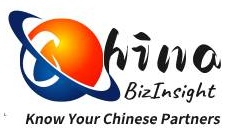Imagine this: Your German-based manufacturing conglomerate receives a $4 million fine because a Hong Kong subsidiary violated environmental regulations. The parent company never signed the toxic waste permits, yet regulators pierced through the corporate veil, holding you liable for actions 8,000 km away. This isn’t fiction—it’s the brutal reality of parent company liability in Hong Kong’s evolving legal landscape.
The Legal Earthquake: Section 326’s Expanded Reach
Hong Kong’s Companies Ordinance underwent a tectonic shift with the 2012 amendments (Ord. No. 28), particularly Section 326. Previously, “unregistered companies” referred narrowly to entities operating locally without formal registration. The revised definition now includes:
“Companies incorporated outside Hong Kong but registered under the pre-amended Ordinance or the Companies Ordinance (28 of 2012)”
In plain English? Foreign parent companies can now be directly liable for their Hong Kong subsidiaries’ compliance failures. Courts increasingly apply “piercing the corporate veil” doctrines when:
- Subsidiaries act as mere “alter egos” of parents (e.g., shared directors/funds)
- Group structures deliberately isolate high-risk activities (e.g., pollution, labor violations)
- Parent companies exercise de facto operational control
Case Study: The $4 Million Domino Effect
In 2022, a German chemical giant faced staggering penalties after its Hong Kong subsidiary dumped untreated wastewater into the Pearl River Delta. Regulators proved the parent:
- Approved budgets bypassing environmental safeguards
- Hired the subsidiary’s board members
- Used shared IT systems to monitor daily operations
The verdict? “Operational entanglement” nullified corporate separation. The parent paid 400% higher fines than the subsidiary itself.
Why Your Corporate Firewall Might Be Paper-Thin
Multinationals often assume subsidiaries insulate them from risk. Hong Kong’s courts disagree. Recent rulings show liability piercing applies to:
| Risk Area | Legal Trigger | Real-World Example |
|---|---|---|
| Environmental Damage | Parent’s strategic oversight of hazardous operations | Chemical waste leakage (2022 case) |
| Labor Violations | Group-wide HR policies bypassing local laws | Factory strike over wage suppression |
| Financial Fraud | Shared auditing systems concealing irregularities | SEC investigation into transfer pricing |
The Isolation Checklist: Is Your Structure Truly Secure?
Use this audit framework to test your subsidiary’s legal moat:
- Board Independence
- Are subsidiary directors employed exclusively by the local entity?
- Do they hold independent voting power over compliance decisions?
- Financial Segregation
- Does the subsidiary maintain separate bank accounts/payment systems?
- Are inter-company loans documented at market rates?
- Operational Autonomy
- Can the subsidiary reject parent-mandated cost-cutting violating HK laws?
- Does it control its supply chain/vendor relationships?
Red Flag: 80% of fined parents failed 2+ criteria.
The Compliance Cost Calculator: Ignoring Section 326 Is Expensive
Underestimating localized liability creates a financial time bomb. Consider these hidden costs:
Direct Penalties
- Fines up to 10% of global revenue (HK Competition Ordinance)
- Disgorgement of profits from non-compliant operations
Indirect Fallout
- Reputational damage: -15% average stock dip post-litigation (HKEX data)
- Operational paralysis: Asset freezes during investigations
Compliance Investment Multiplier
Proactive audits cost 0.2% of subsidiary revenue—versus 5-7% in reactive legal fees.
How to Shield Your Parent Company: 3 Actionable Steps
- Conduct a Veil-Piercing Stress Test
Audit subsidiary decision trails for parent interference evidence. Scrutinize:
- Emails/memos overriding local management
- Budget approvals tied to non-compliant shortcuts
- Localize Compliance Authority
Empower Hong Kong-based directors with veto rights over:
- Environmental permits
- Labor contracts
- Financial reporting
- Continuous Monitoring
Implement real-time checks on subsidiary operations. Track:
- Regulatory license expirations
- Local litigation threats
- Director/shareholder changes
Pro Tip: Automate alerts using platforms like our HK Company Compliance Tracker.
Conclusion: Vigilance Is Your Best Insurance
Hong Kong’s expanded liability regime turns subsidiaries into potential landmines. As Section 326 redefines “unregistered companies,” multinationals must treat operational separation as a strategic imperative—not a paperwork exercise.
The $4 million lesson? When subsidiaries crumble, parents fall harder. Verify your exposures before regulators do.
